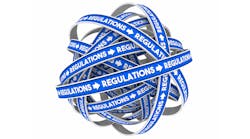The Federal Trade Commission (FTC) is tinkering with the Guides for the Use of Environmental Marketing Claims (Green Guides). Given the growing appeal of “green claims” for a variety of products, it is fitting the FTC is refining and modernizing the Green Guides to help marketers avoid making environmental marketing claims that are unfair or deceptive under Section 5 of the FTC Act. Importantly, the FTC seeks to update the guides “based on increasing consumer interest in buying environmentally friendly products.”
Background
The Green Guides were last revised in 2012. A lot has changed since then, and the demand for “green” products has increased significantly. So too has the opportunity for deception. The Green Guides provide much-needed guidance on environmental marketing claims, including how consumers are likely to interpret claims and how marketers can substantiate claims to avoid deceiving consumers in violation of the FTC Act.
The FTC has asked specific questions to elicit comments from the public on general issues related to the Green Guides. These include, among others, the continuing need for the Green Guides, their economic impact, their effect on the accuracy of various environmental claims, and their interaction with other environmental marketing regulations. The FTC also seeks consumer survey evidence and consumer perception data regarding environmental claims, including those not in the Green Guides currently.
The Green Guides are arguably more important now than they were when first issued.
As of press time in early January, the FTC stated it expects “many public comments” (comments are due in late January 2023) on specific issues that have elicited significant controversy over the past decade. These include:
• Carbon offsets and climate change. The current Green Guides provide guidance on carbon offset and renewable energy claims. The FTC asks whether the revised guides should provide additional information on related claims and issues.
• The term “Recyclable.” Among other things, the FTC seeks comments on whether it should change the current threshold that guides marketers on when they can make unqualified recyclable claims, as well as whether the Green Guides should address in more detail claims for products collected (picked up curbside) by recycling programs but not ultimately recycled.
• The term “Recycled Content.” The FTC asks whether unqualified claims about recycled content — particularly those related to “pre-consumer” and “post-industrial” content — are widely understood by consumers, as well as whether alternative methods of substantiating recycled content claims may be appropriate.
• The need for additional guidance. The FTC also seeks comment on the need for additional guidance regarding claims such as “compostable,” “degradable,” “ozone-friendly,” “organic,” and “sustainable,” including those regarding energy use and energy efficiency.
The FTC’s website lists recent cases relating to topics covered by the Green Guides.
Discussion
Given the ever-growing commercial imperative to be green, sustainable and a member of the circularity crowd, the Green Guides are arguably more important now than they were when first issued. They provide important guidance to companies by setting forth factors and/or required criteria for truthful, substantiated claims as opposed to otherwise potentially amorphous claims such as “recyclable.”
In the decade since the Green Guides were last updated, there have been scientific, regulatory, and consumer perception developments. The FTC seeking comments and reflecting these new developments in updated guides to assist companies in making an increasing number and variety of “environmentally friendly” claims is a positive step.
The FTC may also wish to intensify its enforcement of the guides. Non-compliance can be expected to increase beyond what already is considered widespread as demand for green products increases.
When the Green Guides were last updated, the FTC relied heavily upon submitted comments in determining marketing perceptions and whether and how it could provide guidance for both general and specific environmental claims. The FTC determined at that time insufficient information or evidence existed to provide guidance for several claims, including for “sustainable,” “organic,” and “natural.” Claims related to “energy use” and “energy efficiency” were not specific terms for which the FTC sought comments in 2012. The FTC’s ability to update the guides effectively hinges on well-reasoned and well-supported comments from stakeholders.


